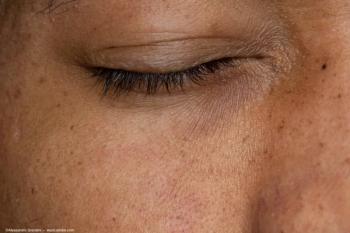
Anti-VEGF AMD drug yields visual benefit
Montr?al—Intravitreal injection with the anti-VEGF antibody ranibizumab [(formerly RhuFab) Lucentis, Genentech] has been associated with impressive results in the treatment of minimally classic and occult choroidal neovascularization (CNV) secondary to age-related macular degeneration (AMD), according to the 1-year outcomes of a phase III trial.
Joan W. Miller, MD, speaking at the annual meeting of the American Society of Retina Specialists, reported on efficacy and safety data from the Minimally classic/ occult trial of the Anti-VEGF antibody Ranibizumab in the treatment of Neovascular AMD (MARINA) study. MARINA is a randomized, double-masked, sham-controlled clinical trial that randomly assigned 716 patients 1:1:1 to monthly sham injections (n = 238) or intravitreal ranibizumab 0.3 mg (n = 238) or 0.5 mg (n = 240).
"These data are very compelling because ranibizumab is the first potential treatment shown to improve vision in a significant number of patients with wet AMD rather than having its benefit measured in terms of just slowing progression of vision loss," Dr. Miller explained. She is the Henry Willard Williams Professor and Chair of Ophthalmology, Harvard Medical School, and chief of ophthalmology, department of ophthalmology, Massachusetts Eye and Ear Infirmary, Boston.
The primary efficacy analysis considered the proportion of patients who maintained or improved best-corrected visual acuity (BCVA) (loss of fewer than 15 ETDRS letters) at 12 months versus baseline. That outcome was achieved by almost all patients (about 95%) treated with ranibizumab compared with 62% of patients in the sham group (p < 0.0001). Results from prespecified subgroup analyses showed ranibizumab maintained its high level of efficacy irrespective of lesion size, entry vision, or lesion composition.
For the clinically important secondary efficacy endpoint of the proportion of patients with vision improvement of 15 or more letters, 25% and 34% of patients within the ranibizumab 0.3- and 0.5-mg treatment groups, respectively, achieved that outcome compared with only <5% of sham-treated patients (p < 0.0001), according to Dr. Miller.
To be eligible for enrollment in MARINA, patients had to have a minimally classic or occult with no classic lesion measuring 12 disc areas (DA) or smaller, visual acuity between 20/40 and 20/320, no history of treatment with verteporfin for injection (Visudyne, Novartis Ophthalmics/QLT Inc.) photodynamic therapy (PDT), and evidence of presumed recent disease progression as determined by the presence of either blood, recent lesion growth measured by fluorescein angiography, or recent vision loss. Subjects identified as qualified by investigators based on their screening evaluations were eligible for randomization only after angiographic eligibility was confirmed by the MARINA study's reading center. Those patients were then stratified based on entry vision, lesion composition, and enrolling center prior to randomization.
The three study groups were well-balanced at entry in their baseline and demographic characteristics. Overall, median visual acuity was about 20/80 and mean lesion size almost 4.5 DA.
Eighty-nine percent of patients in the sham group were seen at the 12-month visit, and follow-up was even higher in the ranibizumab 0.3 mg (95%) and 0.5 mg (94%) groups. Of the possible 12 injections, patients in the sham, ranibizumab 0.3-mg, and ranibizumab 0.5-mg groups received an average of 10.8, 11.5, and 11.3 injections, respectively.
Newsletter
Don’t miss out—get Ophthalmology Times updates on the latest clinical advancements and expert interviews, straight to your inbox.


















































.png)


